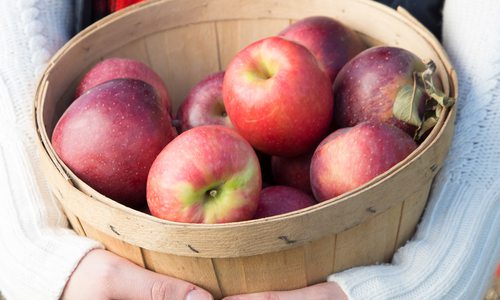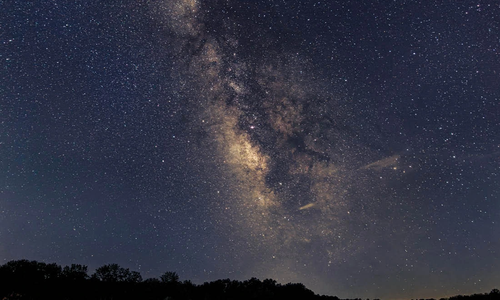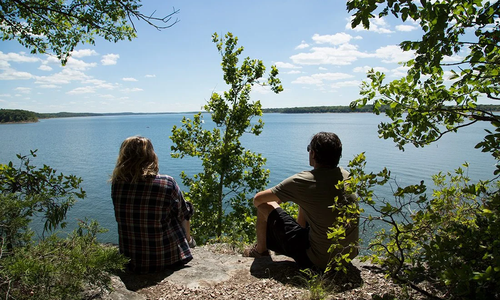Outdoors
Hunting for Frost Flowers in the Ozarks
A special kind of “wildflower” only emerges in October—and only for about a day.
By Sony Hocklander
Oct 2024

I’ve lived in the Ozarks for 25 years, but until last fall, I’d never seen an elusive frost flower. I’ve been envious of photos posted by lucky early morning hikers showing ethereal white ribbons of ice curling around the stem of a native wildflower on trails.
At last, I saw some for myself early one cold morning a year ago at Wilson’s Creek National Battlefield. The timing, location and weather conditions—a perfect frost flower storm if you will—had finally aligned in my favor.
Neither Frost, Nor Flowers
While we call them “frost flowers” around the Ozarks, the fleeting delicate icy sculptures are not the same as frost and only sometimes look like flowers. Just as often, they look like swirls of white cotton candy, or like very thin white ribbon candy. Sometimes they are heart-shaped, or circular.
Bob Kipfer, a member of the Springfield Plateau chapter of the Missouri Master Naturalists, thinks they look more like ice ribbons. Also known in some parts of the country as ice flowers, the phenomenon’s official name is crystallofolia, coined by Bob Harms, a professor from the University of Texas, Austin. Kipfer spoke to Harms about his own interest in frost flowers because he and his wife get so many on their 400 acres near Bull Creek.
What’s Happening
Frost flowers often occur with the first hard freeze in fall, when the air temperature drops below freezing at night but days are still mild temperatures, says Malissa Briggler, State Botanist with Missouri Department of Conservation.
As the temperature continues to drop, moisture in the stems of certain 417-land native wildflowers begins to freeze and expand until it bursts through the stem in small vertical slits. “Moisture is still moving through that stem and the plant hasn’t completely shut down for the winter yet,” Briggler says. As moisture moves through the slits, she adds, “it’s continually pushing out this water and freezing.”
As the moisture freezes, it curls into fragile, thin swirls or “petals.” While they are fleeting, it’s possible frost flowers can happen more than once on the same plant, Kipfer says, if freezing nights and warmer days continue but the effects will be reduced. It depends on how damaged the plant becomes, and how much moisture is retained.
Once the ground has completely frozen—when it’s freezing night and day—frost flowers are over for the season.
Finding Frost Flowers
Frost flowers only form on certain wildflower plants. They most often occur around the base of a stem but may reach higher on taller plants. The best frost flower plants are wildflowers that mature late.
Portions of Kipfer’s property are filled with one of the most common contenders, white crownbeard (also known as frostweed), which can grow tall. “It’s a weedy natural plant, and it’s got flowers spring and summer that are not particularly showy. But in winter, when (frost flowers) hit, we will have them all over the field,” Kipfer says.
Another plant in 417-land most likely to form frost flowers is dittany. “You could easily walk past it and not see it because it’s so low to the ground,” Kipfer says.
Briggler says a few other Missouri plants that produce frost flowers include yellow ironweed, goldenrod and boneset.
On the Hunt
Frost flowers are like snowflakes: No two are alike. To discover them for yourself, wait for conditions when temperatures first drop below freezing at night but remain above freezing during the day.
When that happens, plan to get up early. Frost flowers occur overnight and they melt quite quickly when direct sunlight falls upon them.
From a distance, frost flowers have been mistaken for cotton, discarded tissues or plastic grocery bags. The first time Kipfer and his wife, Barb, saw them, they thought thick white spider webs had formed around their plants. When Briggler first saw them, she thought styrofoam or paper had scattered on the roadside. “Upon closer inspection, I realized, no, those were actually frost flowers everywhere,” Briggler says.
Frost flowers may be found along creeks and rivers, in low-water areas along a woodland trail, on fencerows and in ditches. Any undisturbed place where white crownbeard is likely to grow is a good spot to check.
I saw them near a creek area while driving the tour road around Wilson’s Creek Battlefield. Kipfer has seen them at Lake Springfield. He recommends driving along back country roads to find some on the first frosty morning.












